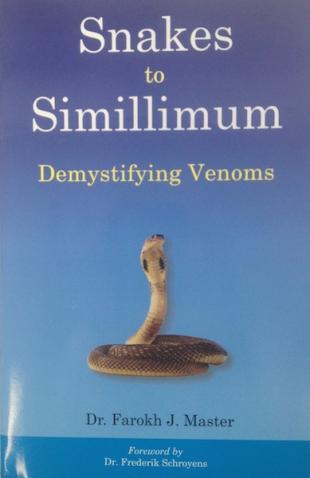- You cannot add "Homoeopathy & Patterns in Mammals" to the cart because the product is out of stock.
BOOK CATEGORIES

Homoeopathic Patterns in Periodic Table by Joshi
by Joshi, B & S
$123.00
4 in stock
MORE INFORMATION
Bhawisha Joshi is popular for her insight into Noble gases and her extensive work on mineral remedies. In this book, she has put together a complete comprehensive understanding of the periodic table and detailed the picture of elements of Rows 1- 3. Every element has been explored to the utmost detail .Most important of all – the information is put in a reader friendly manner .The cases are well-edited and several tables have been put forth for quick and easy reference The left and the right side of the periodic table are effectively compared as are individual elements and an entire section is dedicated to salt remedies. If you are familiar with Scholten’s, Sankaran’s and Shah’s work on the themes of the remedies from the periodic table, here is an additional work to help deepen your understanding and clarify aspects that may still seem murky. Dr. Bhawisha Joshi and her husband and fellow homeopath Dr. Shachindra Joshi have taken the previous work on the themes of these remedies, put it into practice and developed their own personal approach to explaining the concepts. Book Review: By Kathy Thomas The book starts with a recap of the concepts and issues that help to differentiate the remedies from different kingdoms and moves on to a simple explanation of the nature of minerals or elements and how the patterns develop across the periodic table. There is a review of the themes of the rows and columns before you reach the substance of the book which is devoted to the elements of the first three rows of the periodic table: the hydrogen, carbon and silica rows. The beauty of the book is in the practical expressions that are used to illustrate the remedies. Where Sankaran gives us a succinct sentence that sums up the core of the remedy, Joshi gives us the patient’s expressions which illustrate the themes clearly in the way that we would hear them in a consultation. These expressions are backed up throughout the book with simple differentiations between similar remedies. The cases selected to illustrate the remedies do so clearly, and are accompanied by Joshi’s comments which highlight both the aspects of the remedy and also case taking techniques. “But wait, there’s more” as the old K-tel adverts would have it. There is a section on the themes and expressions of the halogens which also manages to add a practical understanding to the work presented by Scholten and Sankaran. There is a section on the Noble gases with a case for each of them except Radon. And the last section talks about salts and compounds with clear ideas on how to determine if a salt is needed and how to be sure about which elements make up the salt. In this section there is differentiation between salts and other remedies could appear like salts – in particular stage three remedies and noble gasses. The last and smallest section is on the imponderables. This book has become one of my key reference books, if the concerns my patient is expressing are not clearly matched to Scholten or Sankaran’s descriptions, Joshi can often help to make the choice clear.
RELATED PRODUCTS
Related products
-

Principles and Practice of Homoeopathy by Dhawale, Dr. M.L.
$28.00 Add to cart -

Mastering Homeopathy 1 – Accurate Daily Prescribing by Jon Gamble
$50.00 Add to cart -

Homeopathic Mind Maps Remedies of the Class Ave – Birds by Alicia Lee
$66.00 Add to cart -

Snakes to Simillimum – Demystifying Venom by Dr. Farokh Master
$183.00 Add to cart -

Plant Theory Works by Jakob Martin
$72.00 Add to cart